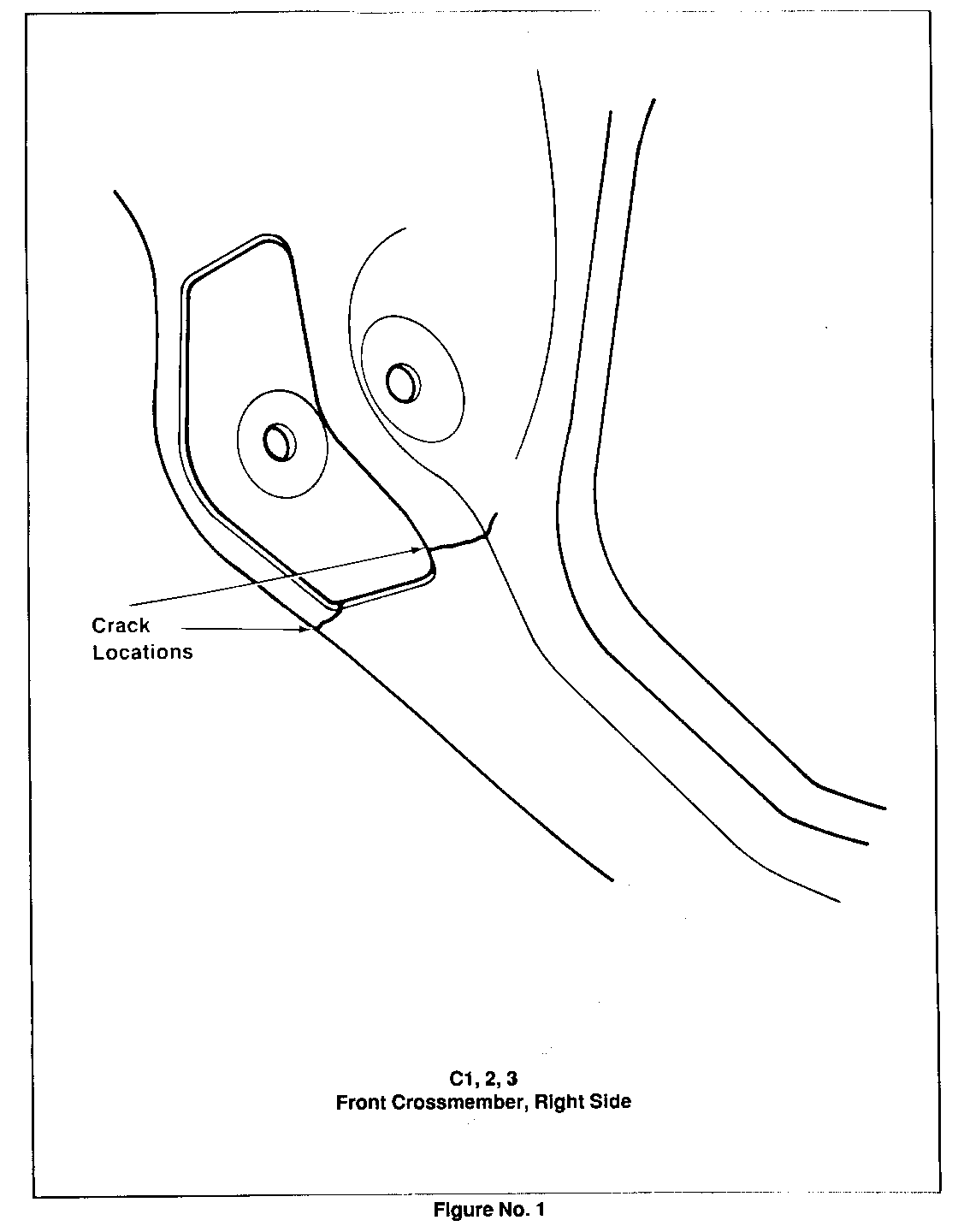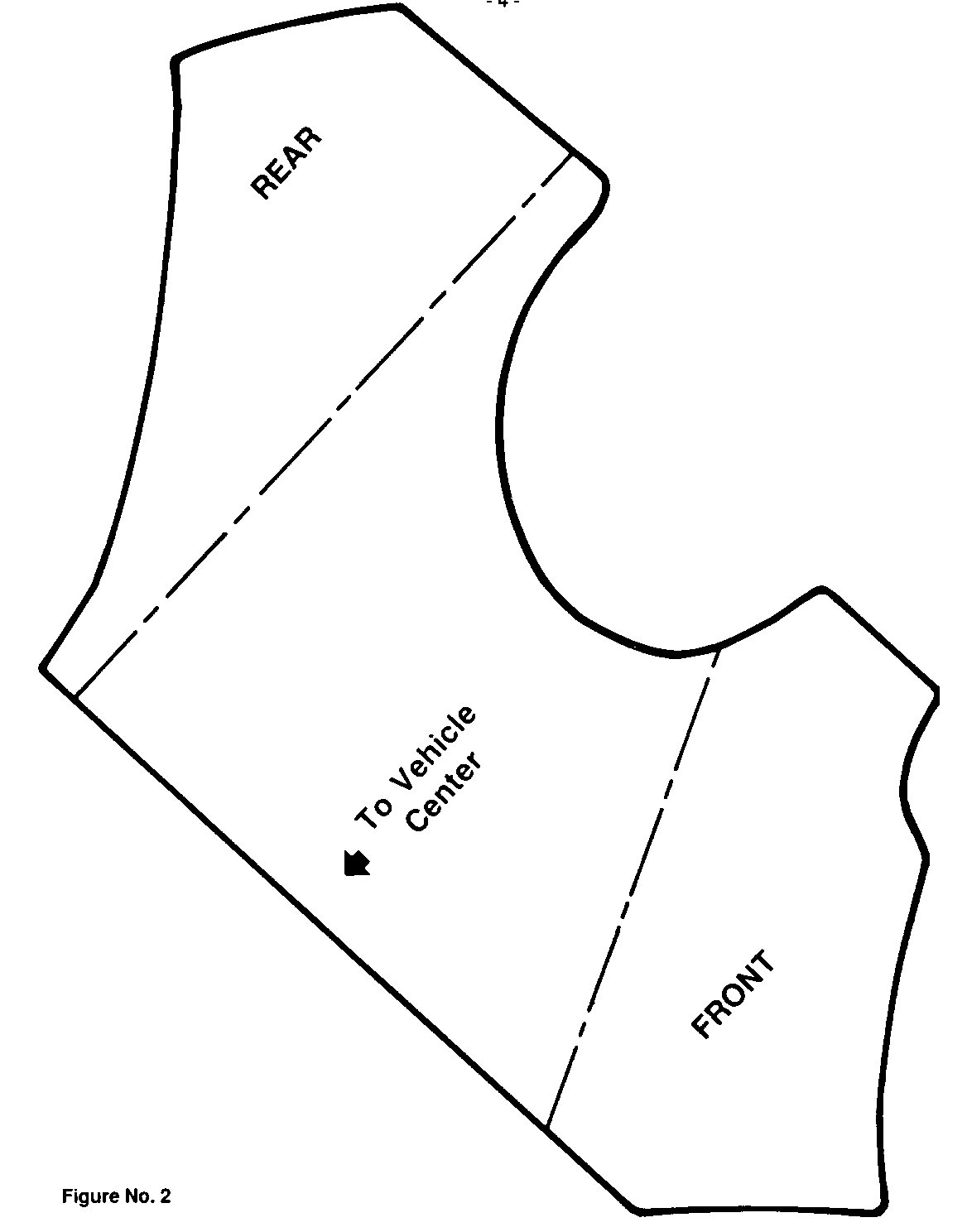FRONT FRAME X-MEMBER CRACK (WELD CRACK & WELD ON PLATE)

Model and Year: 1988-90 C TRUCKS
THIS BULLETIN CANCELS AND SUPERSEDES DEALER SERVICE BULLETIN NO. 90-165-10, DATED FEBRUARY 1990. THE C3 TRUCK HAS BEEN ADDED. ALL COPIES OF 90-165-10 SHOULD BE DISCARDED.
Some 1988, 89 or 1990 C1, C2 and C3 light trucks subjected to extreme frame flexing in severe duty may experience front frame crossmember cracking. The crack may start at the bottom corner of the right lower control arm pocket and extend up the side (see Figure 1). Trucks experiencing this condition should be repaired by drilling a stop hole at the end of the crack, welding the crack and welding a plate over the crack using the following procedures:
IMPORTANT: Use filler metals from a freshly opened container.
GMAW - Gas Metal Arc Welding use: Electrode E70S-3
SMAW - Shielded Metal Arc Welding use: Electrode E7018
NOTICE: Disconnect battery (batteries) when arc welding on vehicle to avoid electronic component damage.
Service
1. Disconnect battery (batteries).
2. Remove right side lower control arm (refer to service manual sec 3-C).
3. Clean or grind crossmember surface to determine end of crack.
4. Drill 1/8" stop hole at each crack end. "V" grind crack.
5. Fill entire length of crack with weld and grind smooth.
6. Cut a piece of 1/8" or 3/16" thick 1008 or 1010 steel using the shape in Figure 2 as a template.
6a. Disconnect and connect brake line retainer at frame, move brake line aside.
7. Clean crossmember to prepare for welding plate to crossmember.
8. Using c-clamp or vise grips, clamp plate to bottom of crossmember so the arch in the plate circles the hole in the crossmember with the rear of the plate to the rear of the vehicle.
9. Weld plate to crossmember in the arch and the straight edge opposite the arch with 1" welds 3/4" apart.
10. Using a torch, heat the front and rear portions of the plate and work them to conform to shape of crossmember.
11. Weld front and rear of plate to crossmember continuing with 1 " welds 3/4" apart.
NOTE: It may be necessary to clamp front and rear of plate to crossmember to ensure tight fit when welding.
12. Spray paint plate black.
13. Reinstall lower control arm.
14. Reconnect battery (batteries).
For vehicles repaired under warranty, use:
Labor Operation: T8065
Labor Time: 1.5 Hrs.
NOTE: Labor Operation is coded to base vehicle coverage in the warranty system.


General Motors bulletins are intended for use by professional technicians, not a "do-it-yourselfer". They are written to inform those technicians of conditions that may occur on some vehicles, or to provide information that could assist in the proper service of a vehicle. Properly trained technicians have the equipment, tools, safety instructions and know-how to do a job properly and safely. If a condition is described, do not assume that the bulletin applies to your vehicle, or that your vehicle will have that condition. See a General Motors dealer servicing your brand of General Motors vehicle for information on whether your vehicle may benefit from the information.
